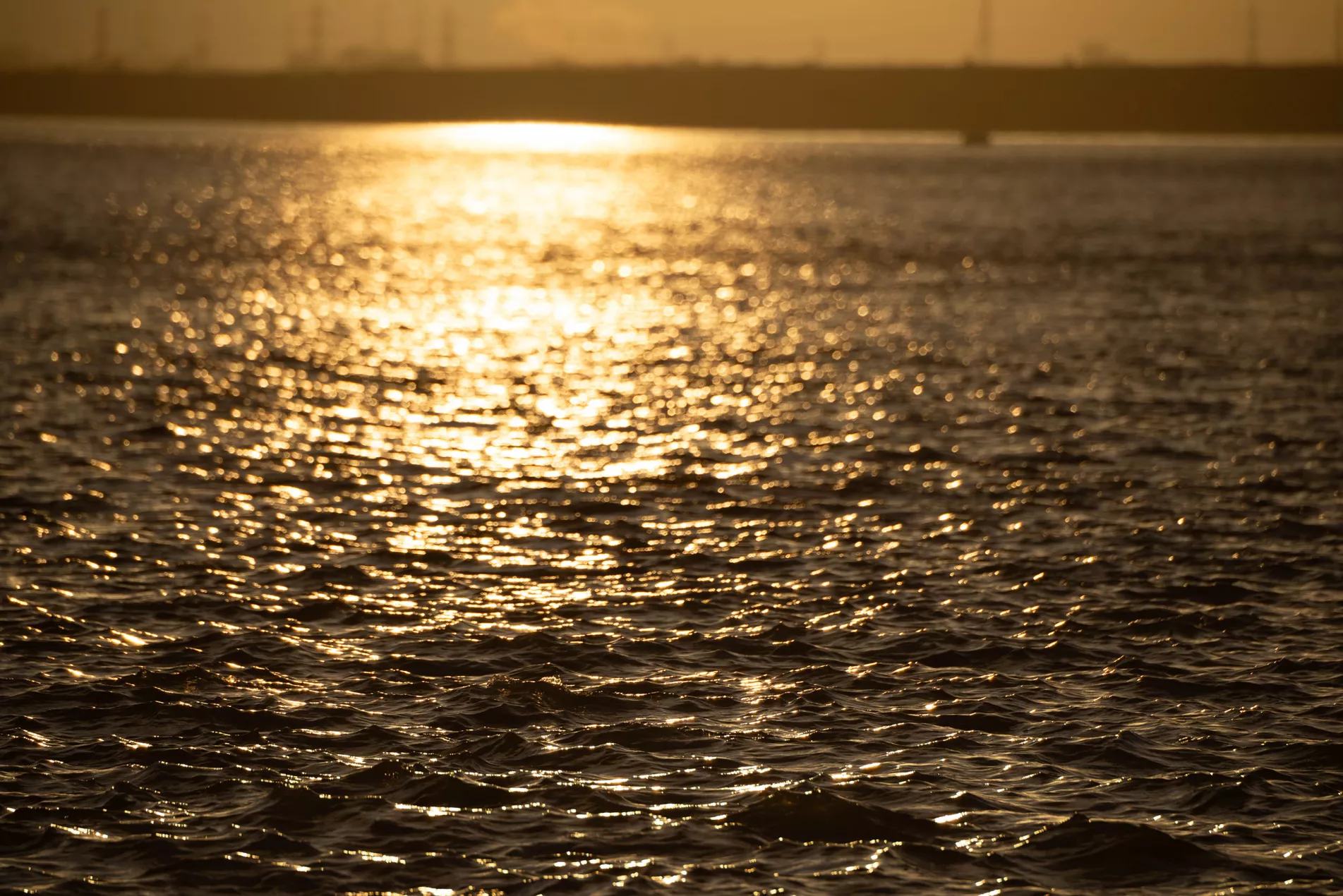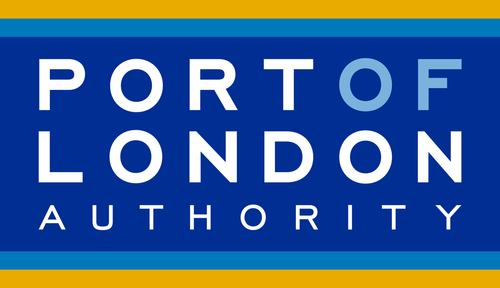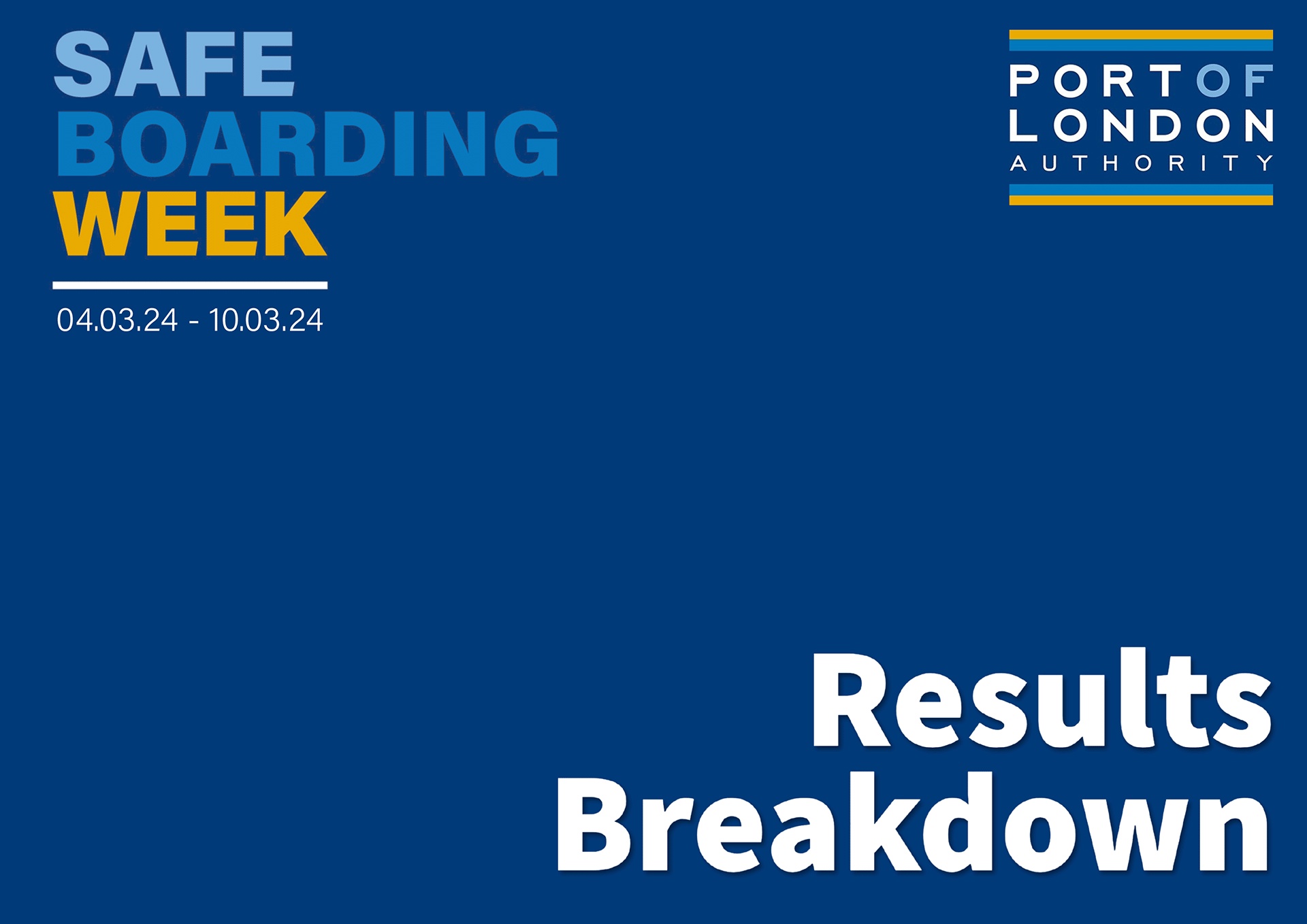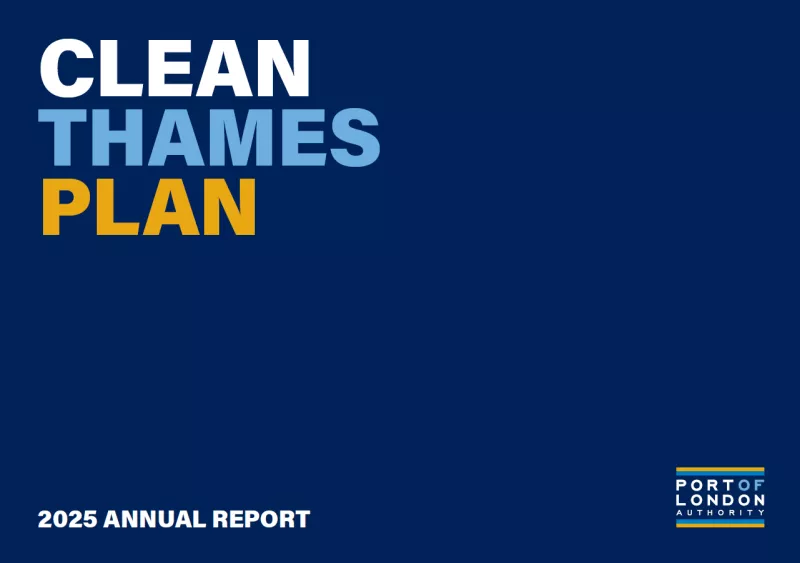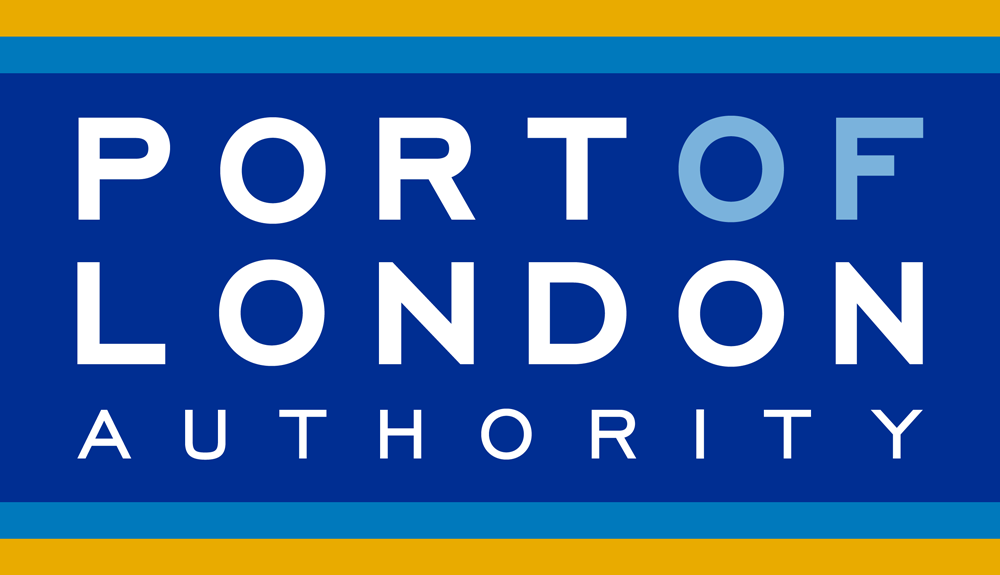Live Tides
NOTICES TO MARINERS
Charts & Surveys
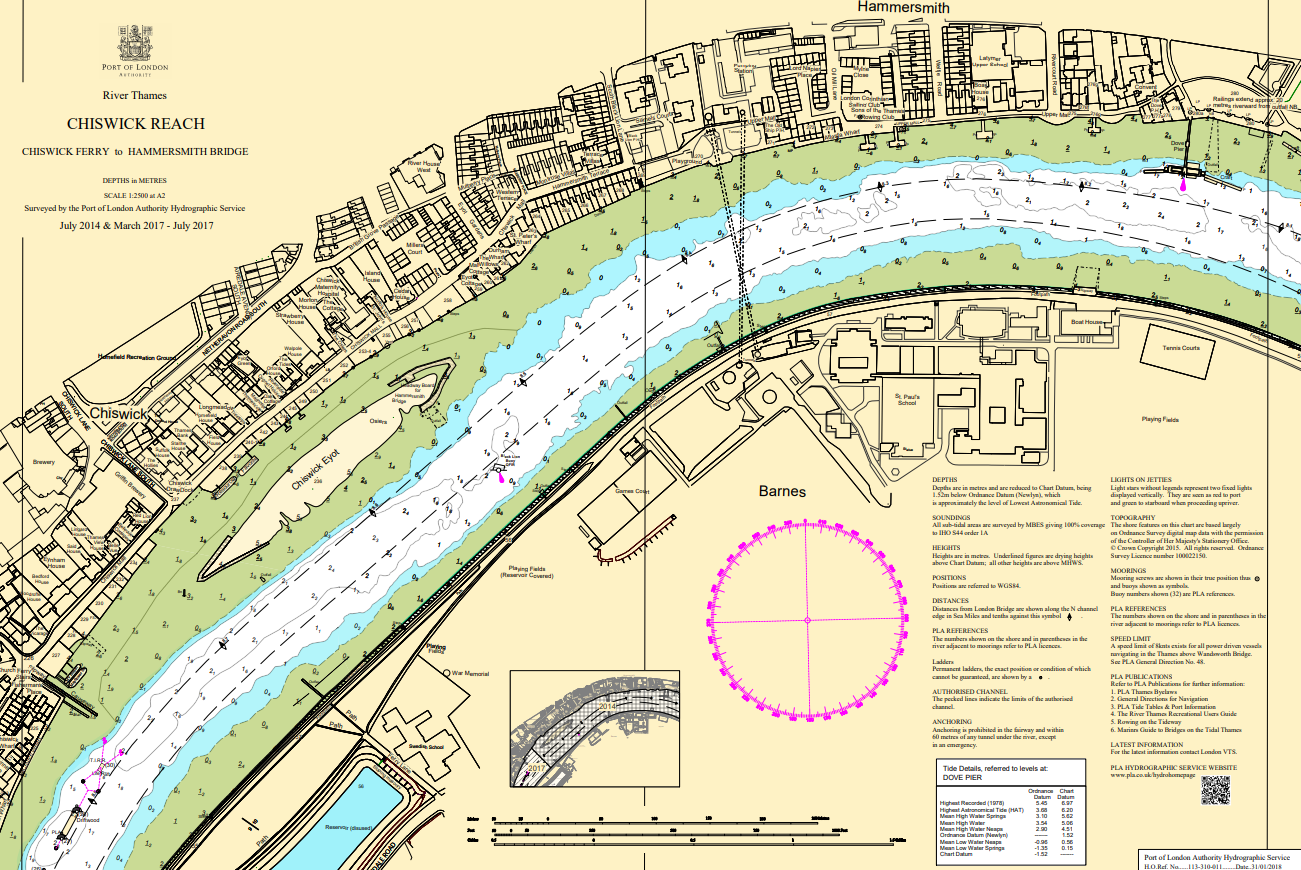
Incident reporting
Life-threatening emergencies on the river:
Call 999 and ask for the Coastguard
For near miss, safety observations and incident reporting click below
Safe Boarding Week 2024 was the Port of London Authority (PLA)’s second, week-long safety initiative, aiming to increase awareness of safe access and highlight its importance on the 95 miles of the tidal Thames that it manages.
Safe access to and from a varied range of vessels on the Thames, which includes ladders onto ships, as well as ship to shore access at berths, terminals, jetties and piers, is a key concern for the PLA.
Inspired by Panama Canal Authority’s Safe Boarding Week, an annual event since the late 1980s, in 2023 the PLA initiated its own safety event, which aligns with our proactive approach to safety and safe boarding. This report provides a summary of our findings.
336 inspections carried out
During our last year’s campaign, we carried out a total of 265 inspections. This year we surpassed that by conducting a total of 336 inspections.
This chart shows a breakdown of the types of access arrangements that were inspected. The three main types in use were:
- Gangways: 23%
- Pilot Ladders: 32%
- Piers (step across access): 35%
The remaining 10% were either linkspans or other types of boarding arrangement, including quayside vertical ladders.
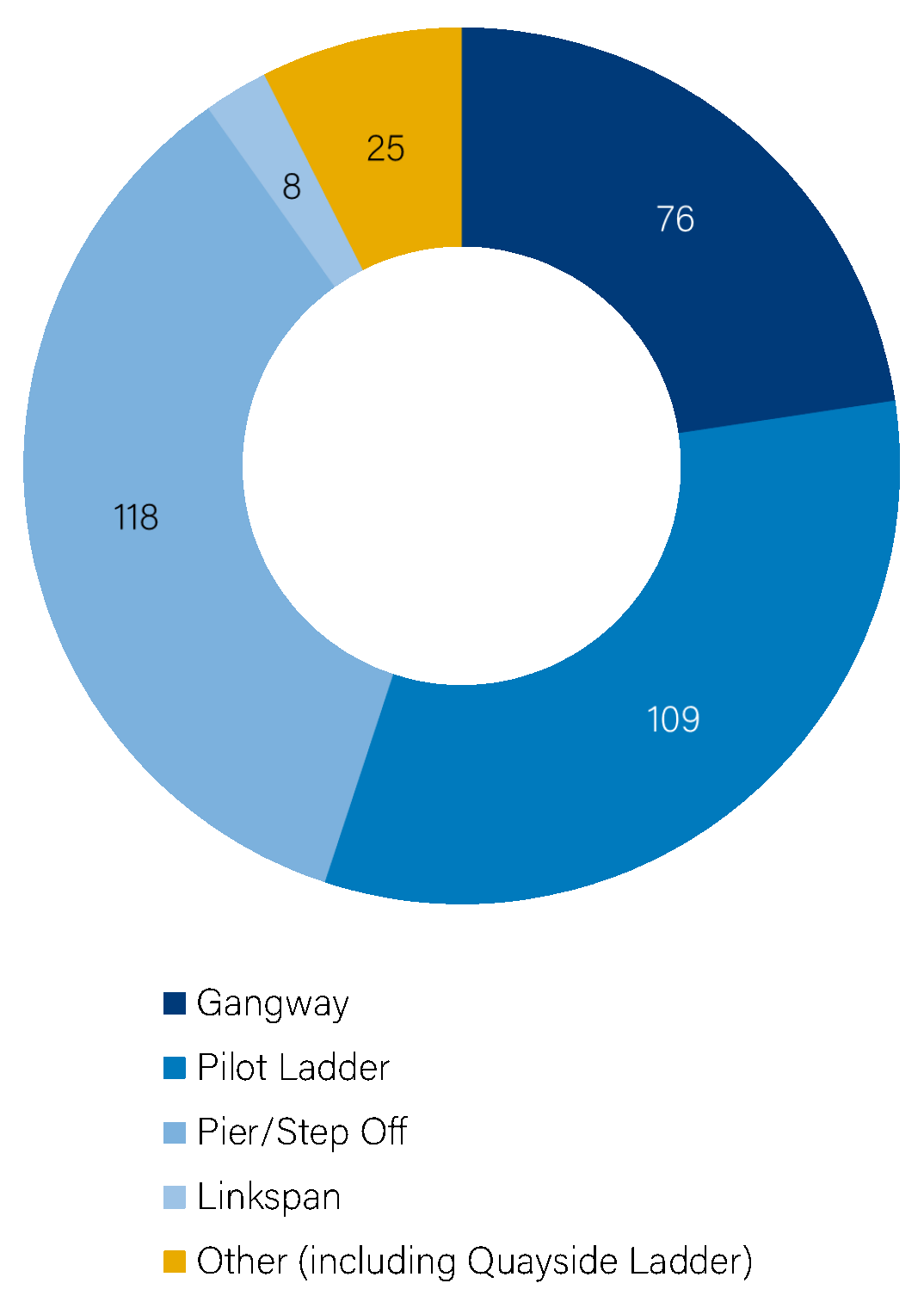
54 locations on the tidal Thames

On the left you can see a breakdown of our inspections by general location.
The blue bars show the number of inspections carried out by colleagues in the Chief Harbour Master’s management team and afloat staff (240) who visited commercial berths, piers, wharves and jetties.
The yellow bar depicts inspections conducted by our Pilots when boarding commercial vessels at Pilot Boarding areas in the Estuary and lower Thames (96).
76 gangways
80% of all gangways inspected1 were found to be compliant. The graph below depicts the areas checked when inspecting a gangway. The main issues encountered where that 30% did not have a safety net fitted correctly, whereas 16% did not have a lifebuoy nearby and 13% were missing signage showing the restrictions of safe use.
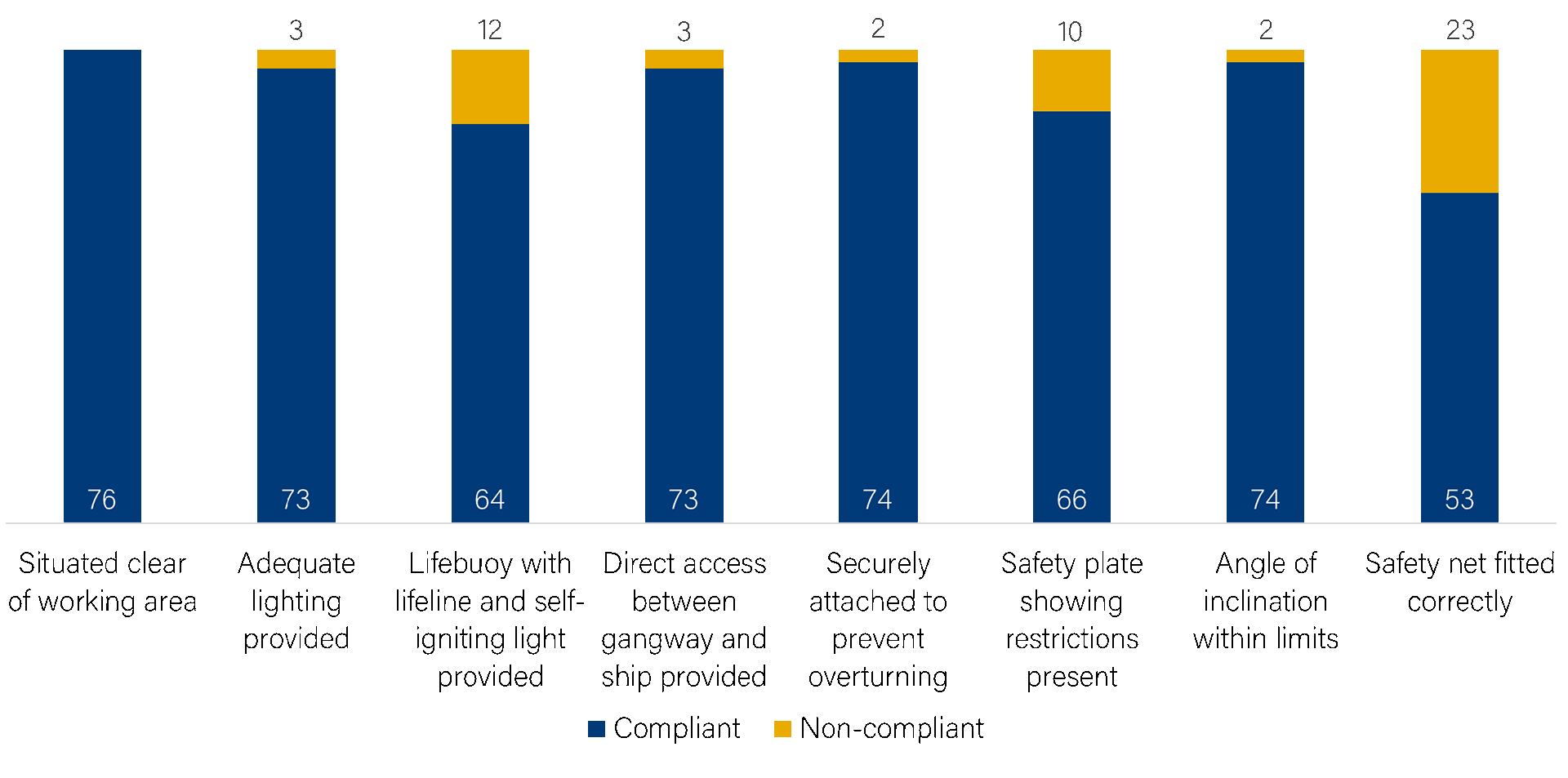
The condition of gangways was considered Satisfactory in the following areas:
- Overall cleanliness: 99%
- *Wires: 84%
- Stanchions/Hand holds: 99%
- Hand ropes/rails: 99%
- *Turntable: 100%
- *Lifting points: 100%
1% of gangways had issues with the condition of wires*, stanchions and hand ropes.
*Where applicable
1 It should be noted that this analysis reflects only the gangways inspected during Safe Boarding Week 2024. In the whole of 2023, 40 deficiencies were reported for this type of boarding arrangement.
Common issue with gangways
Safety nets rigged incorrectly
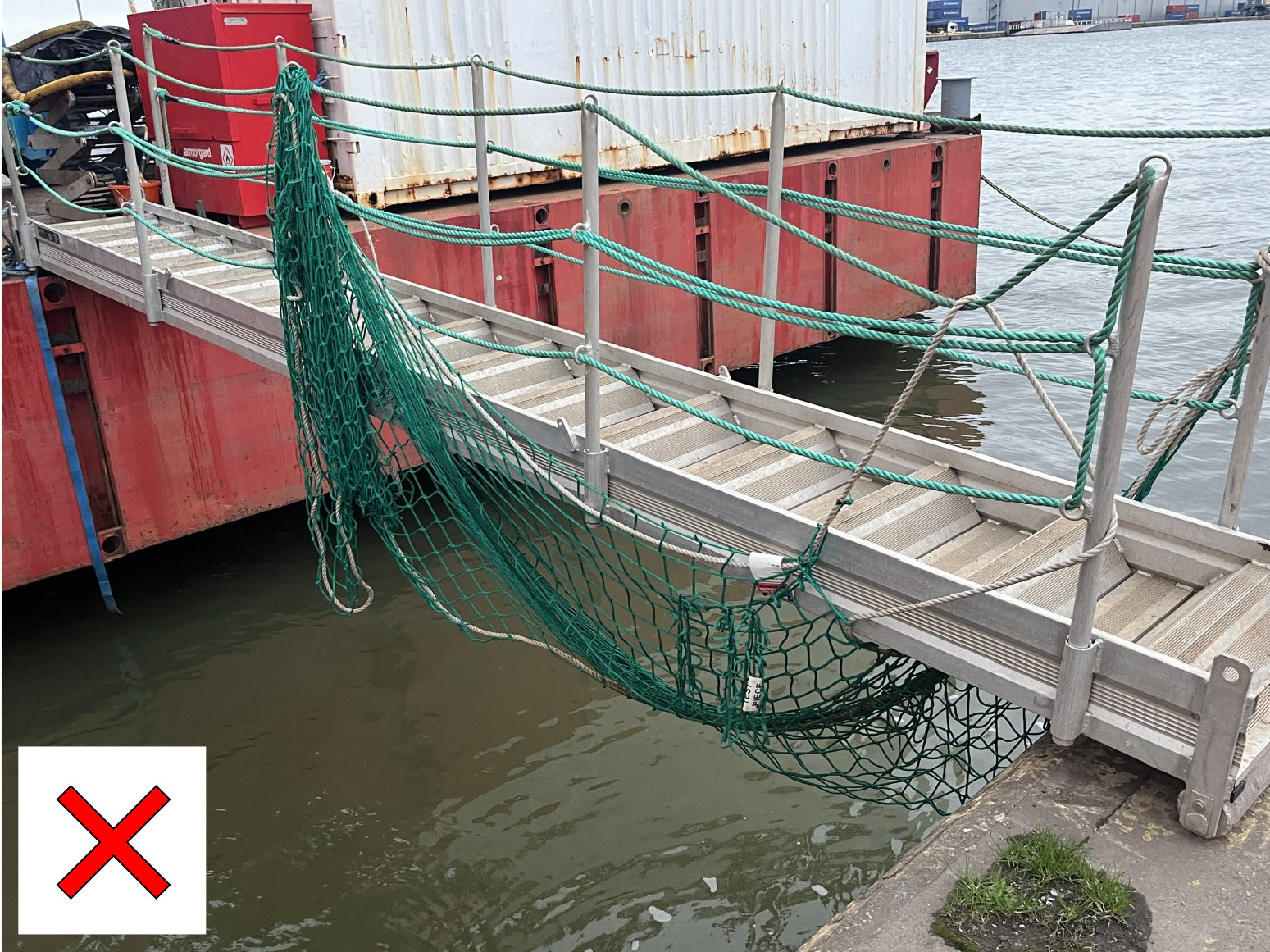 The Code of Safe Working Practices for Merchant Seafarers (COSWP) provides guidance to crew of vessels operating in UK waters. Chapter 22, Boarding Arrangements, Section 22.3 states that “where there is a risk of a person falling from the access equipment or from the quayside or ship’s deck adjacent to the access equipment, a safety net must be mounted where reasonably practicable.
The Code of Safe Working Practices for Merchant Seafarers (COSWP) provides guidance to crew of vessels operating in UK waters. Chapter 22, Boarding Arrangements, Section 22.3 states that “where there is a risk of a person falling from the access equipment or from the quayside or ship’s deck adjacent to the access equipment, a safety net must be mounted where reasonably practicable.
“The aim of safety nets is to minimise the risk of injury arising from falling between the ship and the quay or falling onto the quay, deck or between two vessels. As far as is reasonably practicable, the whole length of the means of access should be covered. Safety nets should be securely rigged, with use being made of attachment points on the quayside where appropriate.“
It is a common misconception that gangways, with a net that wraps around the gangway and only covers the sides and bottom do not require a separate safety net. This net will not catch you if you fall off, that is why you need a safety net which is fitted around the entire length of the gangway.
109 Pilot ladders
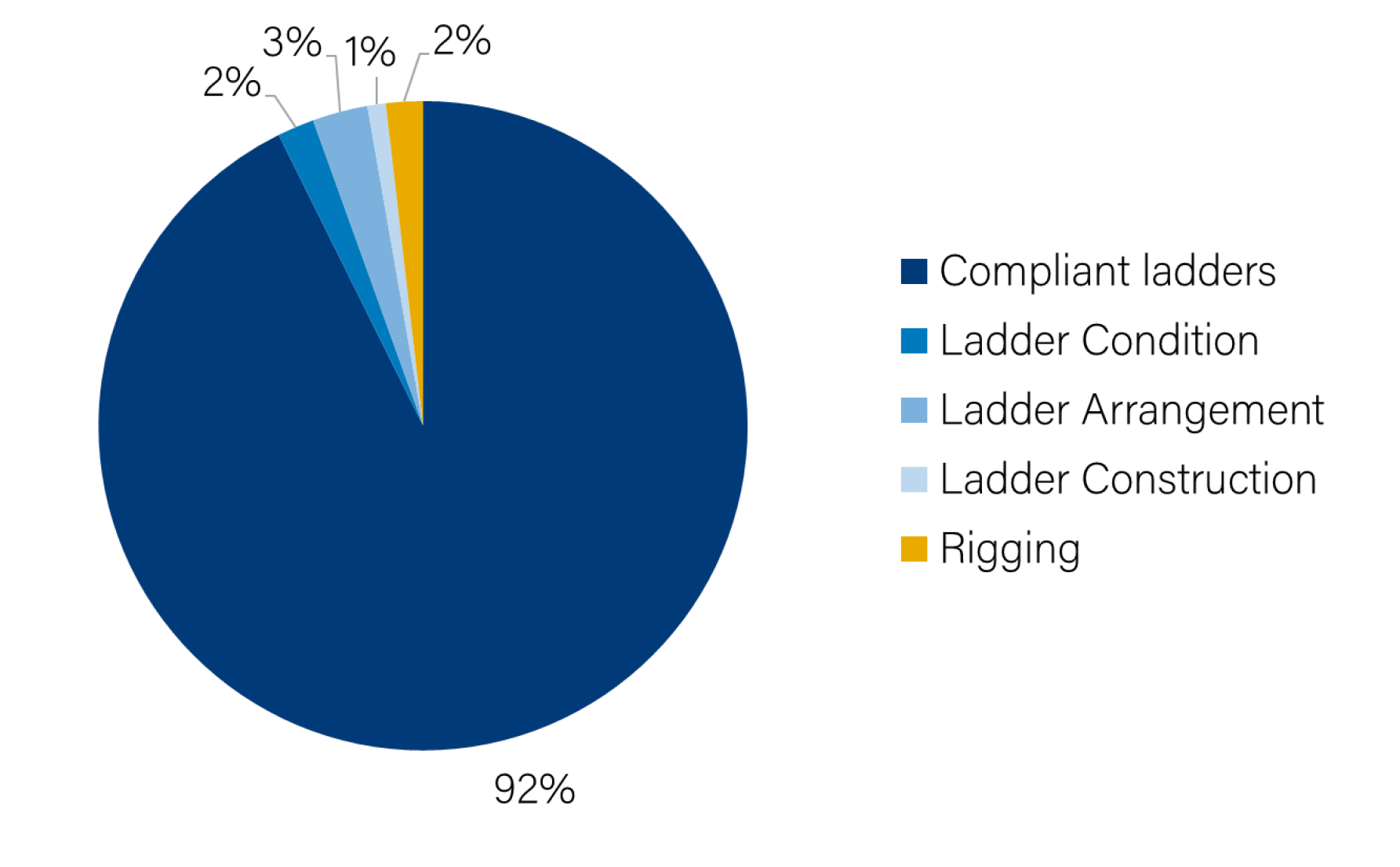
92% of all pilot ladders inspected during Safe Boarding Week were found to be compliant with SOLAS (International Convention for the Safety of Life at Sea regulations) standards.
Of the eight deficiencies, only two of our Pilots were able to identify the deficiency prior to boarding, while six stated that they only became aware of the deficiency once onboard.
Any non-compliance was reported in our Incident Management System and to the Maritime & Coastguard Agency.
Common issues with Pilot ladders
Pilot Ladders secured by shackles
Pilot ladders secured by shackles are a common deficiency. This is because, although Resolution A.1045(27) Section 2.1.1 of the International Maritime Organisation (IMO) allows it: “The securing strong points, shackles, and securing ropes should be at least as strong as the side ropes”, it must be noted that the UK Maritime & Coastguard Agency (MCA) has declared the use of shackles as non-compliant. When secured by shackles, the weight of the ladder is placed on the steps rather than the side ropes, so when the Pilot puts weight on the ladder, the ladder will move freely under the shackles until the next chocks and step has reached the shackles. This can cause serious injury to the Pilot.
Pilot ladders should be secured using rope lashings to a deck strong point using a rolling hitch or appropriate hitch to secure the side ropes. The strong point should be at a distance of not less than 915 mm measured horizontally from the ship’s side inwards.
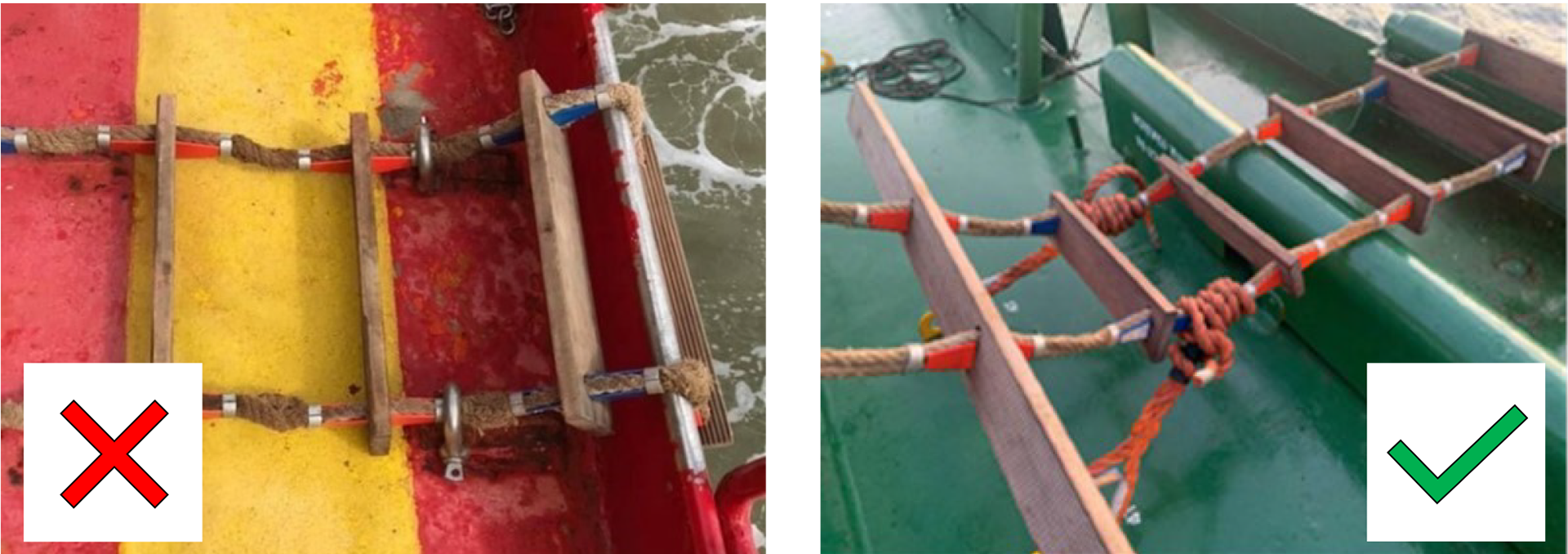
Pilot Ladders secured by deck tongue
Although a common securing arrangement which may appear a simple solution to install and adjust a pilot ladder, this method is deemed non-compliant in the UK and dangerous for anyone who might have to use it. Applicable regulations:
ISO799-1(2019) states that: “each side rope shall have a breaking strength of at least 24kN and the diameter should be 18mm.”
ISO799-1(2019) states that “each step shall have a strength of at least 8,8 kN”
IMO1045(27) 2.1.1 “the securing points...shall be at least as strong as the side ropes”.
Therefore, each side rope can handle 2,400kg (4,800kg together) but each step can only handle a weight of 880kg. This means that by resting the entire weight of the ladder on just one step by using a deck tongue, puts a dangerous strain on the step which could cause it to break causing the ladder to fall. The strength of the deck tongue is often unknown. In most cases it is not tested or certificated either.
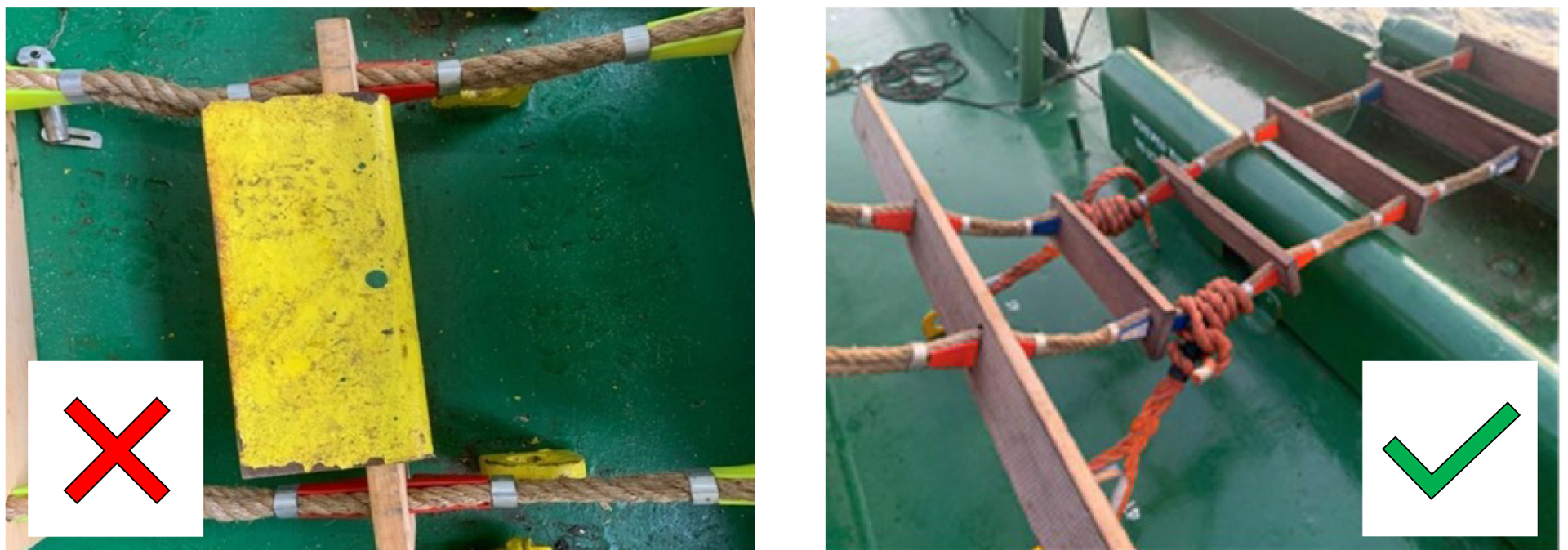
118 pier inspections
91% of all piers inspected were found to be compliant. The graph below depicts the areas checked when inspecting a pier or other location where embarkation/disembarkation is achieved by stepping onto/off the vessel. We are working with operators to address issues around access control, lighting and general condition.
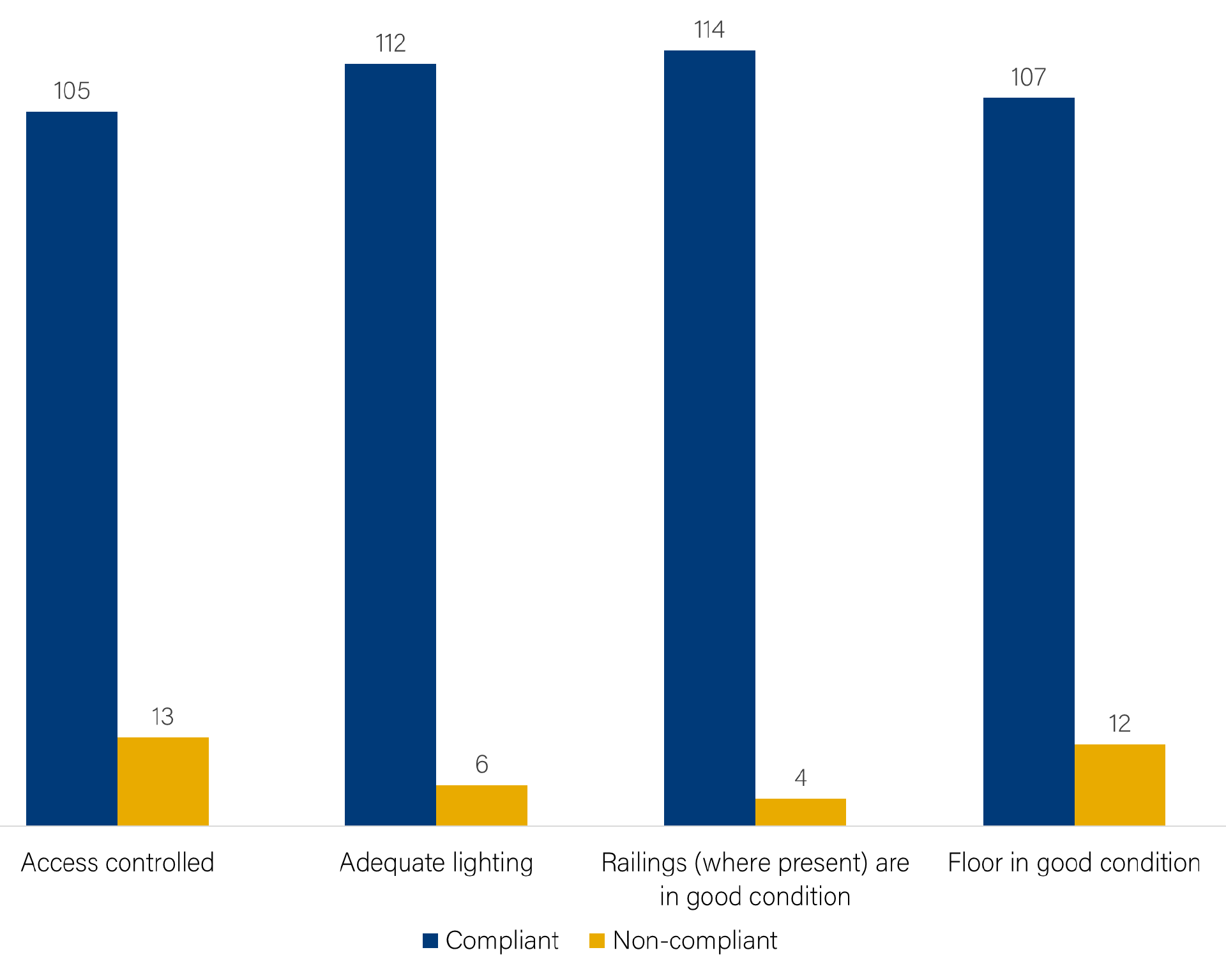
25 other types of boarding arrangements
The other types of boarding arrangement included vertical quayside ladders providing direct access between the quay edge and the vessel. Out of 25 inspections carried out for this type of arrangement, two were found to be unsafe.
Both of these unsafe boarding arrangements were due to there being a large gap between the arrangement and the vessel, presenting a risk to crew and shoreside personnel of falling into the gap between the vessel and the berth edge.
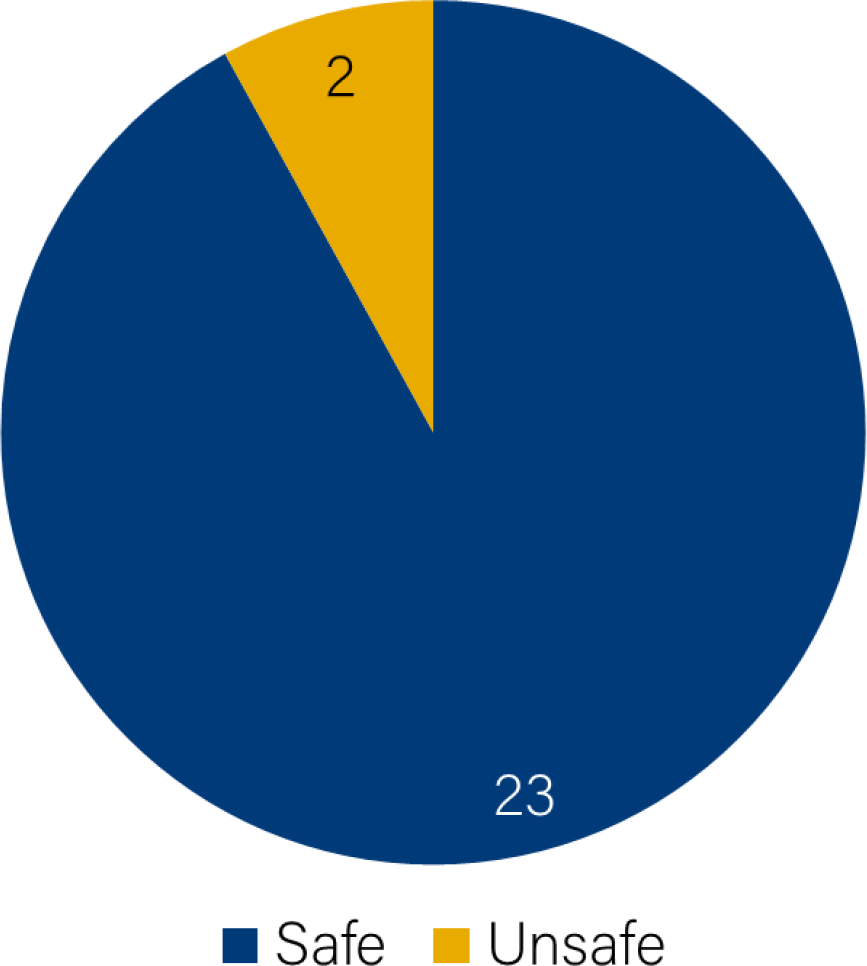
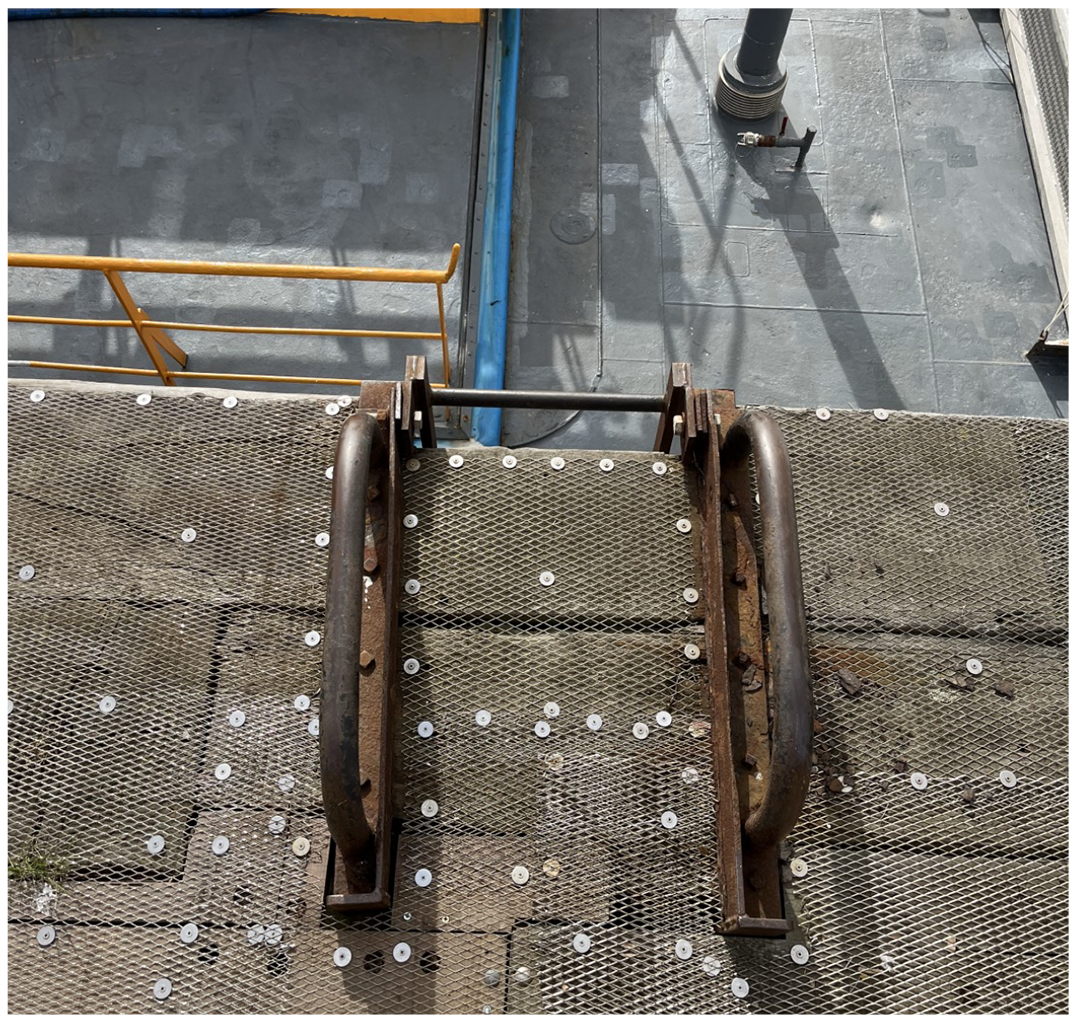
Lifebuoys
One of the aspects of the inspection was to check the availability and condition of lifebuoys at the boarding points either onboard the vessels or on the berth. Here is a summary of what we found:

The condition of lifebuoys was considered satisfactory in the following areas:
- Signage: 92%
- General condition: 92%
- Buoyant line attached: 90%
- Reflective tape: 91%
- Location: 90%
- Easy to remove from storage position: 92%
Deficiencies in the condition of lifebuoys was generally due to exposure to weather.
Throughout the year, our aim is to produce safety campaigns highlighting best practice for the safe rigging of gangways and pilot ladders. We also aim to conduct another Safe Boarding Week next year where we hope to see a continued improvement on compliance.
“We would like to thank all the vessels, terminals, and berth operators who played a part in making Safe Boarding Week a success.
“Moving forward, we will be delivering safety campaigns and conducting liaison visits to highlight the lessons learned. This will help to make working on the Thames a safer environment for everyone involved."
James Stride
Chief Harbour Master
Discover
